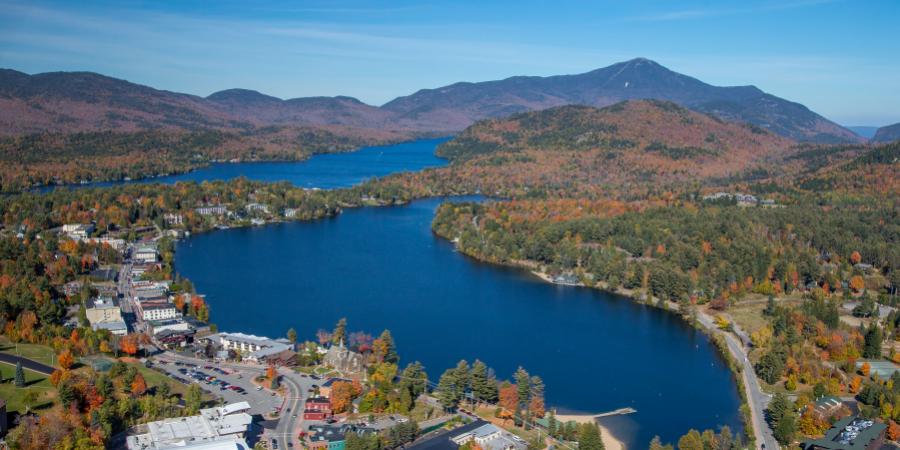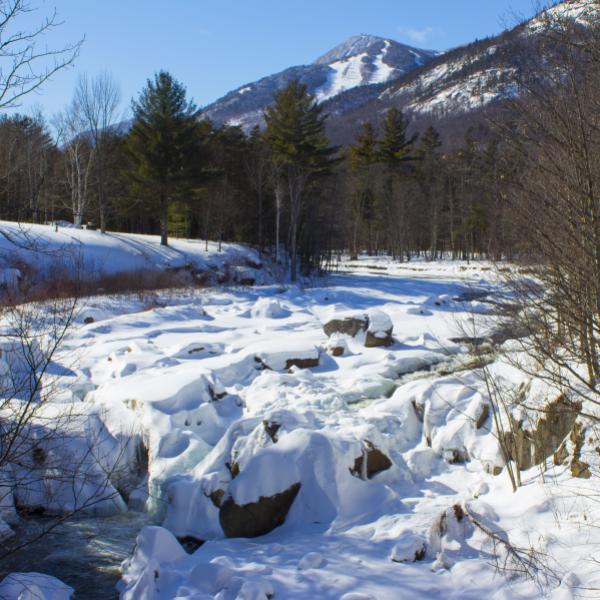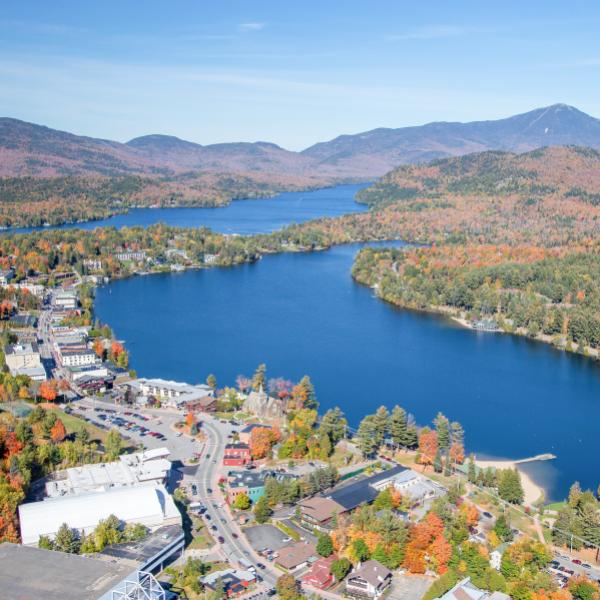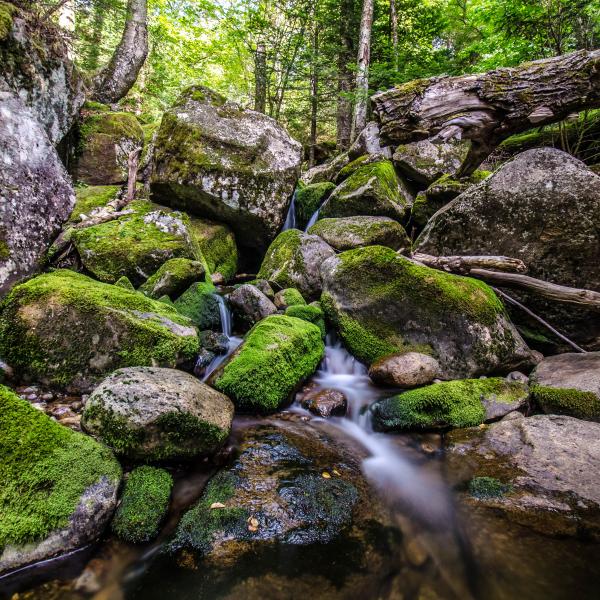Spring is an intense period for our water quality monitoring efforts, particularly on Mirror Lake. It's an essential time of year for lakes because it is one of two periods when they turnover, or mix, each year. You may have heard of the term "turnover" before, but the process that drives it is not intuitive, and only arises due to peculiar properties of water.
Water is extraordinary. Most substances are most dense in their solid form, but that's not the case with water. Solid water, ice, floats on top of liquid water. Water is most dense in its liquid form at 4°C (39.2°F). It is this unique property of water that drives physical mixing processes in our lakes and ponds. Water in direct contact with ice is very close to 0°C, below the maximum density of water. As the ice melts, the temperature of the water below rises, increasing in density. As density increases, the water settles through the water column, displacing the water below. This process continues until the surface water rises above 4°C, at which point the density begins to decrease, and the lake starts to stratify thermally. During the time when the lake surface is warming from 0 to 4°C the lake is mixing, which can be further aided by the wind. This redistributes oxygen and nutrients throughout the water column, a process important for a healthy lake.

Process of lake turnover, or mixing. (Courtesy of National Geographic)
Once the lake surface warms above 4°C the water becomes less dense than the water below, resulting in the lake being thermally stratified, warm on top, cold on the bottom. Thermal stratification prevents the lake from mixing; the cold bottom water is more dense than the warm water above and gets trapped. That water stays there until fall turnover occurs – a process similar to spring turnover.
When road salt runs off the parking lots, sidewalks, and streets of Lake Placid, it enters a stormwater system that discharges directly to Mirror Lake. This salt-laden water is denser than the water in the lake, so it settles to the lake bottom. When the ice goes out and the lake starts to turnover, the salt at the bottom prevents the lake from thoroughly mixing. Ausable River Association staff documented this process in a peer-reviewed scientific paper published in December 2019. Regular monitoring by Ausable River Association staff has recorded an interruption in spring turnover in 2017, 2018, and 2019.
The 2019-2020 winter was mild, and, combined with salt reduction efforts by the Village of Lake Placid, Town of North Elba, New York State Department of Transportation, and local businesses, less salt accumulated at the lake bottom. The lake also experienced an earlier than normal ice off and a prolonged period of cold that delayed the onset of thermal stratification. All of these factors combined, resulting in Mirror Lake mixing just over 3 weeks after ice off.

The colors in this plot represent the concentration of chloride (salt) in the lake from top to bottom (top of figure to bottom of figure) and from January 2019 to April 2020 (left of figure to right of figure). The black line represents the total amount of chloride retained in the lake. High salt concentrations (red) form at the lake bottom during the winter of 2019, lower concentrations observed in 2020. Uniform concentrations from top to bottom in the fall of 2019 and 2020 indicate complete mixing.
This year (2020) is the first time Mirror Lake has thoroughly mixed in the spring since 2016, which followed another mild winter and early ice off. As a result, Mirror Lake has high oxygen concentrations from top to bottom, providing more habitat for lake trout and other aquatic life. Higher oxygen concentrations will also reduce internal phosphorus loading, giving the lake greater resilience to algal blooms. All of this is good news for Mirror Lake.

This figure is read the same as the one above, but instead of showing chloride concentrations, it shows dissolved oxygen concentrations. Red areas represent little or no oxygen in the water. Oxygen concentrations are extremely low at the lake bottom from January 2019 to November 2019 due to a lack of complete mixing. In November 2019 the lake turns over, increasing oxygen concentrations at the lake bottom. This occurred again in the spring of 2020, an event that hadn’t happened since 2016.
The turnover of Mirror Lake is something to be excited about, but it’s important to remember that it happened due to a combination of circumstances, most of which – weather, winter trends, wind – are out of our control. At the same time, it shows us that restoring and protecting Mirror Lake, an essential asset to our community, is within reach. The long-term solution depends on a strategic approach to reducing salt use, a strategy outlined by the Ausable Salt Use Reduction Initiative. Now is not the time to stop moving forward with salt reduction efforts. We need to continue to work together to find sustainable solutions that will protect Mirror Lake regardless of the severity of our winters, the timing of ice out, and spring weather conditions.
Sign-up for our e-newsletter to get weekly updates on the latest stories from the Ausable River Association.



